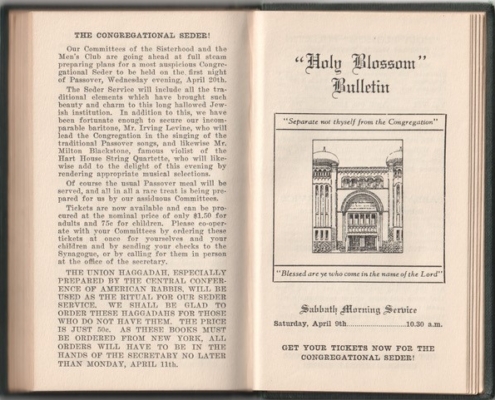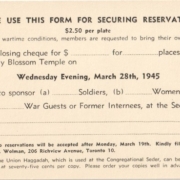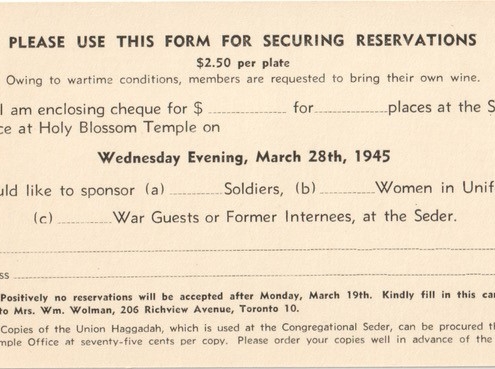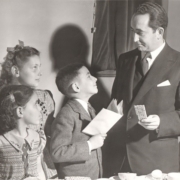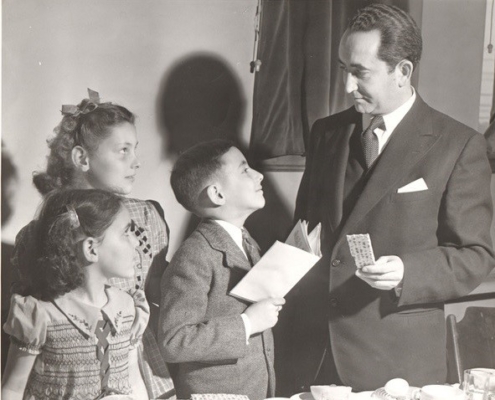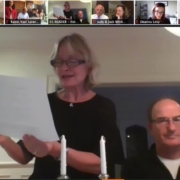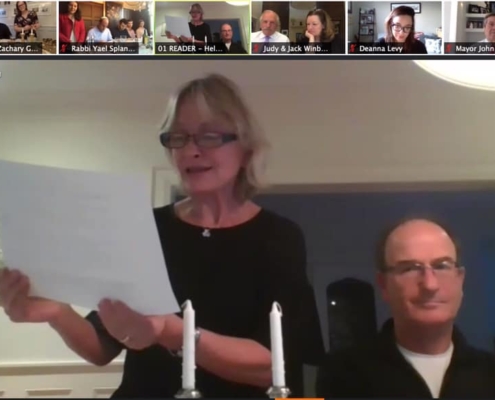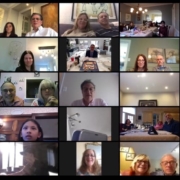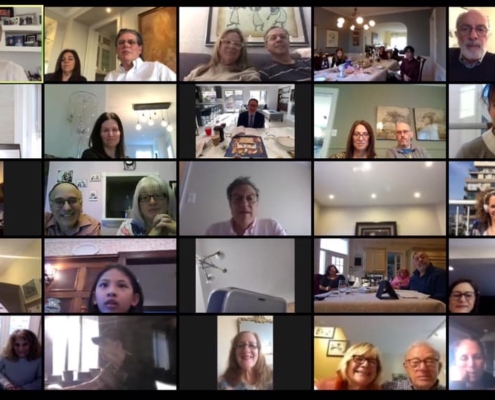Passover Then and Now
By Susan Cohen and Howard Roger
With Passover a few weeks away, the Holy Blossom Archives committee has been sifting through our collection to see how we celebrated the holiday and its different meanings in different eras.
It was always a family holiday, but in the burgeoning city of Toronto, Rabbi Solomon Jacobs of Holy Blossom was anxious to secure the community’s place in the city. In 1911, as reported in The Globe newspaper, Rabbi Jacobs used his Passover sermon to rail against the attempt of a local yacht club to deny membership to “Jews, negroes and people of other undesirable nationalities.” Though antisemitism persisted, the yacht club motion met with so much resistance that it was formally withdrawn.
Later in the century, congregational seders played a big part in energizing our community. In the 1930s, Sisterhood and the Men’s Club reinforced the idea of a special occasion for a big congregational family. The 1932 bulletin invited people to the congregational seder by emphasizing the choir’s “incomparable baritone, Mr. Irving Levine who will lead the singing of the traditional songs” and “Mr. Milton Blackstone, famous violist of the Hart House String Quartette who will likewise add to the delight of the evening by rendering appropriate musical selections.” The notion of a “special occasion” continued for a few decades as we can see by a delightful picture of Rabbi Feinberg breaking matzah for formally dressed youngsters.
The 1945 congregational seder reinforced the notion of welcoming the stranger to the community. Not only were families to reserve a place at the communal Temple seder table but they were also asked to sponsor places for others – for soldiers returned from the front, for women in uniform, and for war guests or former internees. (By the way, wartime restrictions turned Pesach into a BYOB event!)
By the late 1960s and onwards, the chag has served as an opportunity to mobilize the community. For example, the synagogue has highlighted such causes as Soviet Jewry, women, AIDS and the homeless by holding separate third seders to bring issues to the attention of the whole congregation and the larger community.
But will any of us forget the role of the congregational seder just five years ago as we locked ourselves away at the beginning of the Covid crisis? In less than a month after lockdown began, Pesach 5780 went online! Strict instructions were given to celebrate in person only with members of our immediate families, while Rabbi Splansky and her family led our first Virtual Seder. This time our goal at Pesach was to re-create and re-connect our isolated community. Hundreds of Holy Blossom families joined in for three years in a row, making our bonds even stronger.
Today the notion of connecting and re-connecting is still vital. For a few years now, Holy Blossom has been making “meaningful matches” between congregants needing a place to go for seder and congregants who have room for others at their table. If you have space at your seder table, contact Marni Turner, Director of Membership and Community Engagement (mturner@holyblossom.org, or 416-789-3291 ext. 232).
(The Archives Committee receives inquiries regularly. We invite you to contact us about this or other areas of interest at: archives@holyblossom.org. We are always interested in learning and sharing more about our remarkable history. We also encourage you to examine the archival displays in the Schwartz-Reisman Atrium.)
